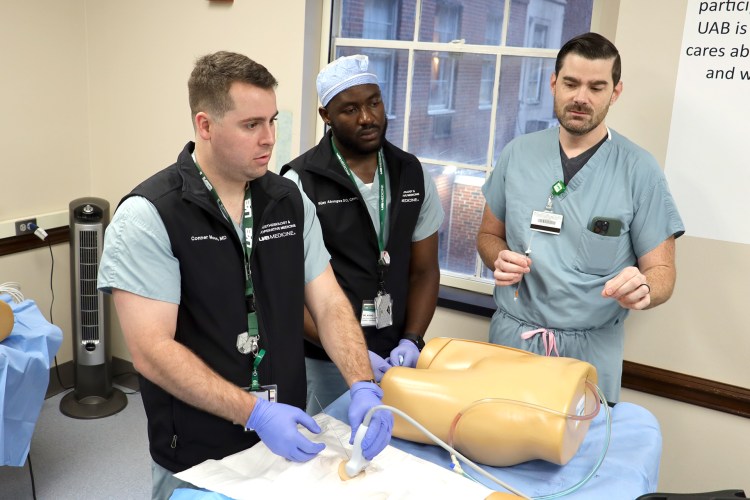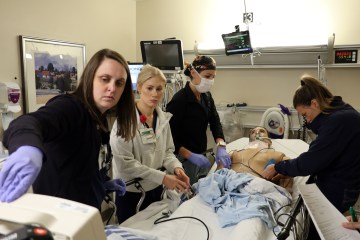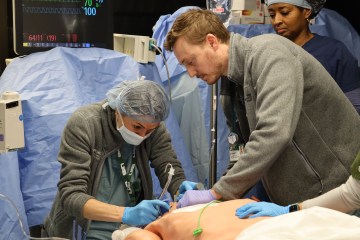iTeachU fuses sim with ultrasound education

This course has a long FUSE.
Offered through a partnership between UAB Clinical Simulation and UAB’s Heersink School of Medicine’s (HSOM) Department of Anesthesiology and Perioperative Medicine, iTeachU is a Focused Ultrasound Simulation Education (FUSE) course made available to anesthesia residents and fellows throughout their years at UAB.
“The idea behind FUSE is to ‘fuse’ the knowledge base of ultrasound, via e-learning, with practical ultrasound skills training using a high-fidelity ultrasound simulator,” said Andrea Hammett, R.N., senior simulation educator in Clinical Simulation and associate director of the Department of Anesthesiology and Perioperative Medicine Simulation Program.
iTeachU utilizes a “flipped classroom” type of learning, Hammett explained, in which residents participate in e-learning tutorials and case studies, followed by an in-person workshop hosted by a faculty member. Then, they work through self-directed sim case studies with a Vimedix ultrasound training simulator.
Matt Broyles, M.D., assistant professor in the Department of Anesthesiology and Perioperative Medicine, said that iTeachU sessions cover a number of point-of-care ultrasound (POCUS) topics, such as vascular access, pulmonary, gastric, transthoracic echocardiography and transesophageal echocardiography.
“Additionally, a number of fellows participate in various modules in order to bolster their POCUS skills in a particular area of interest,” Broyles said.
As such, the program is an ideal vehicle through which learners can hone certain skills.
“iTeachU is particularly effective in helping learners develop microskills for point-of-care ultrasound,” Broyles said. “It is an effective way to learn the hand movements and special relations for obtaining various POCUS skills. Additionally, the simulated case studies help illustrate various disease processes, aiding not only in diagnosing a specific disease but, additionally, the importance of obtaining various views and measurements.”
And the learners agree.
“They typically note that the hands-on sessions are particularly helpful … and it helps them feel like they know what they are doing and what they’re looking for,” Broyles said.
UAB Medicine’s Clinical Simulation program offers opportunities for individuals and teams across UAB Medicine and beyond to practice before they deliver care. We encourage all who provide and support patient care to “SimFirst.” Together, we can put our patients’ safety first.



0 Comments